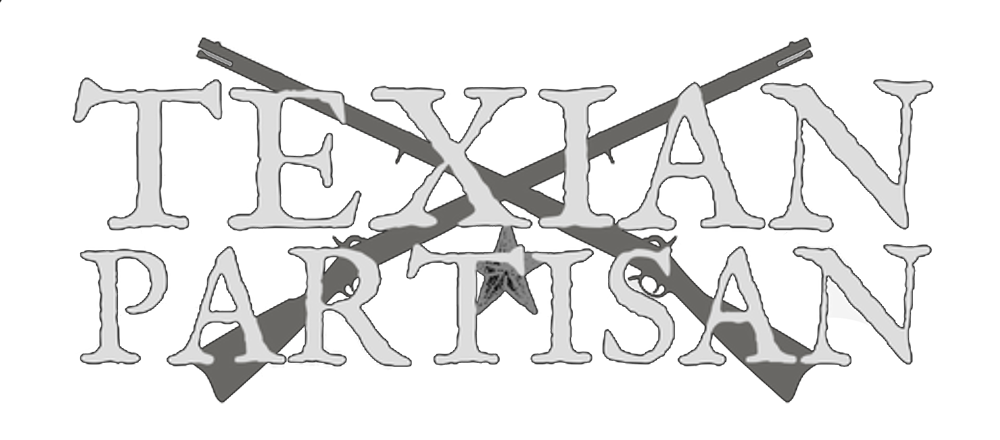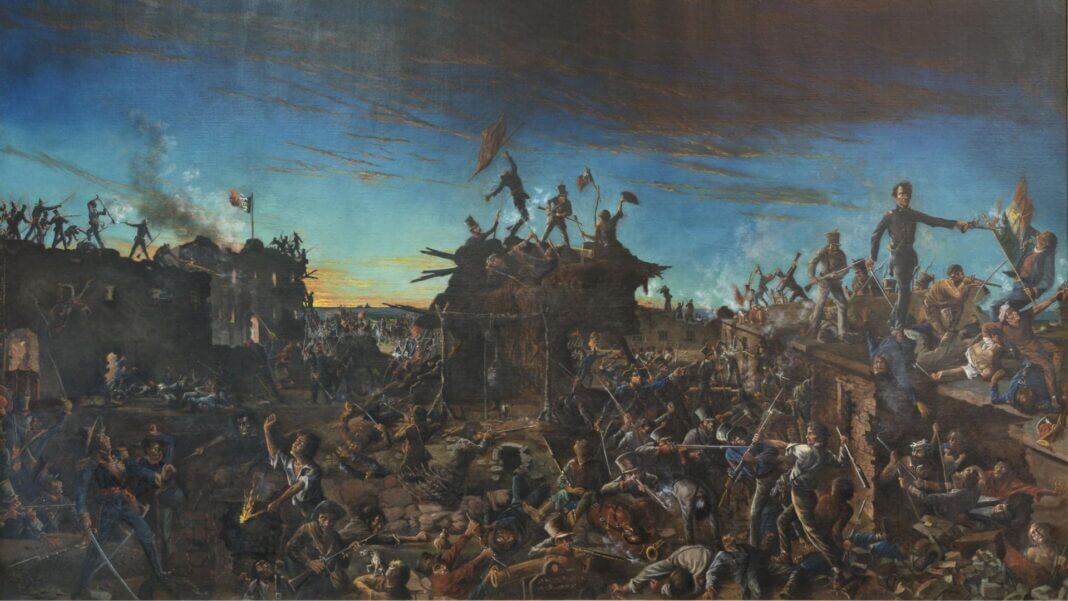The wind in the trees at San Jacinto whispers more than tales of battle and glory. It speaks of sacrifice that came not just from the barrels of rifles, but from the pockets and property of those who believed Texas deserved to stand alone.
We all know the stories of Houston, Travis, Bowie, and Crockett – men who shed blood at the Alamo, Goliad, and San Jacinto. But what about the men who shed gold and silver, land and goods to make their sacrifice possible? What about the merchants who leveraged their personal credit to arm our forefathers? What about the everyday Texians who gave what little they had to forge a nation from wilderness?
These are the forgotten heroes of Texas independence – the financiers and donors who underwrote our freedom.
THE MERCHANT BANKERS: KEEPING TEXAS AFLOAT
When you mention the Texas Revolution, few think of McKinney and Williams. Yet without these two men, Houston’s army might well have been naked, starving, and unarmed in the face of Santa Anna’s forces.
Thomas F. McKinney and Samuel May Williams lent an astounding $99,000 to the revolutionary cause – close to $3 million in today’s money. Their partnership became the financial backbone of Texas independence, a role that would end up costing them dearly.
Williams, who began as a mere clerk for Stephen F. Austin, used his family’s credit lines back east to arm our revolution. In 1835, he traveled to the United States and borrowed against his brother’s good name to purchase the 125-ton schooner Invincible for our nascent navy.
When Williams returned to Texas in May 1836, he didn’t come empty-handed. Along with ammunition and supplies, he brought approximately 700 volunteers on three additional ships. Each of those men would help push Mexico off Texas soil.
Meanwhile, Thomas McKinney put his own vessels into service for Texas. His schooner San Felipe captured the Mexican vessel Correo de Mexico in September 1835, an early naval victory that boosted Texian morale. Later, McKinney borrowed against his own credit to purchase another schooner, the Liberty, to support the rebellion.
What did these men get for their sacrifice? Nothing but debt and promises. The Republic of Texas couldn’t repay them for decades. Williams died in 1858 having never been repaid. McKinney spent his final years pleading for the government to honor its debts, dying in 1873 with the matter still unresolved.
The State of Texas finally acknowledged a small portion of the debt ($17,000) in 1873, but even then did not remit any funds to McKinney’s estate. A full settlement wasn’t made until much later when the state finally recognized their legacy. By then, both men who had risked everything were long dead.
Robert Triplett’s story runs parallel. When the provisional government desperately needed cash, Triplett advanced “substantial sums himself in exchange for prime real estate on Galveston Island.” The agreement was signed on a riverboat to Galveston as the government fled both Washington-on-the-Brazos and Harrisburg to escape Santa Anna’s advancing army. A surviving loan certificate (No. 286) documents Triplett’s $320 contribution and bears the signatures of Stephen F. Austin, Branch T. Archer, and William H. Wharton.
AUSTIN: THE FATHER AND FUNDRAISER OF TEXAS
Stephen F. Austin wasn’t just the “Father of Texas” because he brought settlers here. During the revolution, he became our chief diplomat and fundraiser.
In December 1835, as Mexican forces threatened Texas settlements, Austin was dispatched with Robert Triplett and William Wharton to New Orleans to arrange loans. Their efforts bore fruit. On January 10, 1836, they notified Governor Smith that they had arranged two loans totaling $250,000. The first loan of $200,000 was subscribed by ten men from Cincinnati, Kentucky, Virginia, and New Orleans, while the second loan of $50,000 came primarily from New Orleans residents.
Austin continued fundraising efforts throughout the United States. In April 1836, he arranged for an additional $100,000 loan from New York investors. He even made an “ingenious proposition” to President Biddle of the United States Bank for a $500,000 loan, though this was ultimately rejected. On April 15, Austin made a “frantic appeal” to President Andrew Jackson for a portion of the $37 million surplus in the U.S. treasury.
Austin’s tireless efforts ensured that the Texas Revolution didn’t die for lack of funds. He wasn’t just the Father of Texas – he was its financial lifeline.
GIVING LAND TO GAIN LIBERTY
James Kerr, a soldier, statesman and surveyor for whom Kerr County was later named, demonstrated his commitment to independence by donating 480 acres of land in De Witt’s colony on March 23, 1836. This donation came at a critical moment when President David Burnet had proposed a plan for citizens to sell individual property to raise funds for the revolution.
Having fought at San Jacinto alongside Houston, Kerr understood the revolution’s urgent needs. His land donation represented a substantial personal sacrifice at a time when land constituted the primary wealth of Texas settlers.
THE PRINTER’S REVOLUTION
Gail Borden’s name is known today for condensed milk, but his true contribution to Texas was spreading news of the revolution. As publisher of The Telegraph and Texas Register, Borden kept the spark of independence alive through the printed word.
When Mexican forces advanced on San Felipe, Borden was forced to flee, and his printing press was dumped into the Brazos River. Most men would have given up. Not Borden. He acquired a new press and continued publishing to keep “the dispersed Texians informed.”
Beyond his publishing efforts, Borden actively participated in fundraising initiatives. He printed appeals for Texians to “donate land, goods, and money to the cause of Texas Independence” and personally endorsed President Burnet’s plan for property donations, expressing the opinion that “a contribution of $100 was worth more than a subscription of $1000.”
THE SMUGGLER’S GIFT
Nacogdoches merchant Adolphus Sterne couldn’t fight directly due to “prior troubles with the law,” but he found another way to serve. Sterne made significant contributions by smuggling weapons and ammunition into Texas from the United States. Additionally, he organized a company of volunteers from New Orleans called the “New Orleans Greys,” who fought and died at the Alamo and Goliad.
His covert operations exemplify how some supporters contributed through high-risk activities rather than direct financial donations. A historical marker in Nacogdoches commemorates the “Bivouac and Banquet for the New Orleans Greys,” honoring Sterne’s contribution to Texas independence.
EVERYDAY HEROES
Not all contributions were large, but even modest donations reflected widespread support for Texas independence. On November 30, 1835, General Sam Houston presented a gift of $100 from John Hutchins of Natchez, Mississippi to the provisional government. While small compared to some other donations, this contribution from a citizen of another state demonstrated the broader appeal of the Texas cause among Americans.
H.K.W. Hill of Nashville gave $5,000 – over $150,000 in today’s money – at a critical moment when the Alamo had just fallen. The Texas Convention formally thanked him for his generosity on March 7, 1836.
Samuel St. John, a cotton merchant from Mobile, Alabama, authorized the provisional government to draw on him for $5,000. His motivation? He had visited Texas in 1832 and “retained a lively interest in her welfare, because of her peculiar facilities for cotton growing.” Even then, businessmen recognized the potential of Texas.
COMMUNITIES COMING TOGETHER
On November 1, 1835, Frost Thorn informed the Texas Consultation that the citizens of Nacogdoches had collectively pledged twenty-eight horses and $2,800 in a mass meeting the previous day. This community-wide effort demonstrated how entire settlements mobilized their resources for independence.
In November 1835, the provisional government learned that a committee in New Orleans had raised $7,000 for Texas. Half of this sum had already been used to equip and transport volunteers, while the balance was “rapidly growing by other donations.”
Perhaps one of the most consequential donations came from citizens of Cincinnati, who forged and donated two six-pound cannon that were delivered to Galveston in March 1836. These cannons, later nicknamed the “Twin Sisters,” were transported by the privateer Flash to Morgan’s Point on April 11.
These cannons proved decisive the following week at the Battle of San Jacinto, where they helped secure the victory that won Texas independence. This story demonstrates how even non-monetary donations could have an outsized impact on the revolution’s outcome.
THE PRICE OF FREEDOM
For every soldier who gave his life, there were a dozen Texians and Americans who gave their fortunes, their credit, and their property to make independence possible. Many never saw their contributions repaid. The Republic’s finances remained precarious for years, and many debts were settled long after the original donors had passed away.
Their willingness to risk their wealth speaks to their conviction that Texas independence was worth the sacrifice. These financial heroes of the Texas Revolution may not have fought on the battlefield, but their contributions were no less essential to ultimate victory at San Jacinto and the birth of the Republic of Texas.
The history of Texas independence isn’t just written in blood. It’s written in banknotes, land grants, and promissory notes signed by desperate men fighting for a dream. As we celebrate the heroes of Texas, let’s remember those who opened their purses so our nation could be born.
To put this all in perspective, it’s worth looking at the problem from an old set of eyes. If our forefathers were willing to risk everything – not just their lives but their fortunes – for Texas independence, what might we be willing to risk today?


